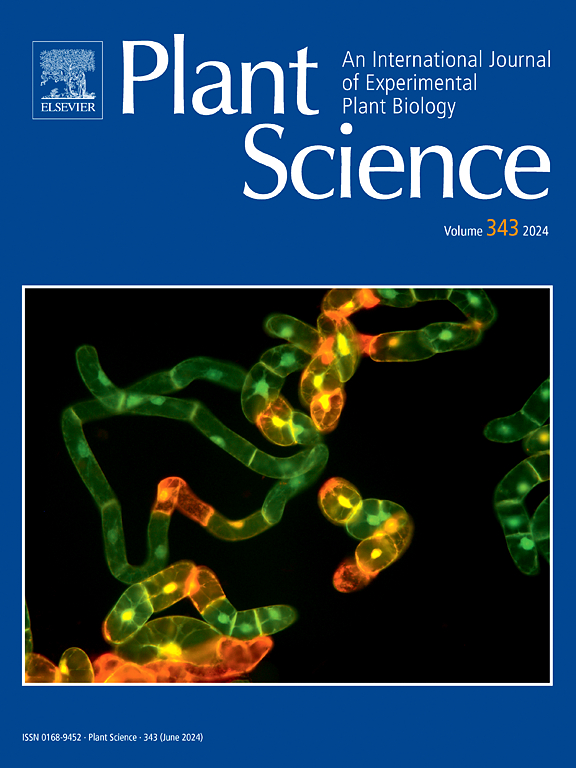Shaping the future: Unravelling regulators modulating plant architecture for next-generation crops
IF 4.2
2区 生物学
Q2 BIOCHEMISTRY & MOLECULAR BIOLOGY
引用次数: 0
Abstract
Plant architecture traits in crops are modulated through intricate interactions of various genetic pathways, which helps them to adapt to diverse environmental conditions. Key developmental pathways involved in forming plant architecture include the LAZY-TAC (Tiller Angle Control) module regulating branch and tiller angle, the CLAVATA-WUSCHEL pathway controlling shoot apical meristem fate and the GID1-DELLA pathway governing plant height and tillering in major food crops. These pathways function in concert to shape the overall architecture of plants, which is essential for optimizing light capture, resource allocation, reproductive success and eventual crop yield enhancement. Presently, plant architecture of modern crops has been shaped especially by artificial selection of natural alleles that target yield traits. Recent advances in CRISPR-Cas-based genome editing and genomics-assisted breeding strategies have enabled precise genetic manipulation of natural alleles in the functionally relevant genes regulating plant architecture traits in crops. This will assist researchers to select and introgress superior natural alleles in popular cultivars strategically for restructuring their desirable plant-types suitable for mechanical harvesting as well as enhancing the crop yield potential.
塑造未来:解开调节下一代作物植物结构的监管者。
作物的植物结构性状是通过各种遗传途径的复杂相互作用来调节的,这有助于它们适应不同的环境条件。在主要粮食作物中,参与植株结构形成的关键发育通路包括调控分枝和分蘖角的LAZY-TAC(蘖角控制)模块、调控茎尖分生组织命运的CLAVATA-WUSCHEL通路和调控株高和分蘖的GID1-DELLA通路。这些途径共同塑造了植物的整体结构,这对于优化光捕获、资源分配、繁殖成功和最终提高作物产量至关重要。目前,现代作物的植物结构主要是通过人工选择针对产量性状的天然等位基因来塑造的。基于crispr - cas的基因组编辑和基因组学辅助育种策略的最新进展使得对调节作物植物结构性状的功能相关基因中的天然等位基因进行精确的遗传操作成为可能。这将有助于研究人员在热门品种中战略性地选择和引入优越的天然等位基因,以重组其适合机械收获的理想株型,提高作物产量潜力。
本文章由计算机程序翻译,如有差异,请以英文原文为准。
求助全文
约1分钟内获得全文
求助全文
来源期刊

Plant Science
生物-生化与分子生物学
CiteScore
9.10
自引率
1.90%
发文量
322
审稿时长
33 days
期刊介绍:
Plant Science will publish in the minimum of time, research manuscripts as well as commissioned reviews and commentaries recommended by its referees in all areas of experimental plant biology with emphasis in the broad areas of genomics, proteomics, biochemistry (including enzymology), physiology, cell biology, development, genetics, functional plant breeding, systems biology and the interaction of plants with the environment.
Manuscripts for full consideration should be written concisely and essentially as a final report. The main criterion for publication is that the manuscript must contain original and significant insights that lead to a better understanding of fundamental plant biology. Papers centering on plant cell culture should be of interest to a wide audience and methods employed result in a substantial improvement over existing established techniques and approaches. Methods papers are welcome only when the technique(s) described is novel or provides a major advancement of established protocols.
 求助内容:
求助内容: 应助结果提醒方式:
应助结果提醒方式:


